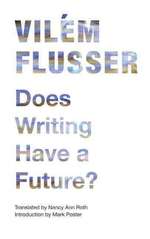
Excerpt Hover, Htmlgiant (2011)
It’s funny how much shadows are glorified under hovering windows, the subtle gradation from dark to light, as if we were the sun casting these shadows from God’s eye view. Rembrandt and Caravaggio spent a lot of time with chiaroscuro, moving across their subject’s face from dark to light. An imaginary sphere will always be rendered in pencil with its shadow, for the surface upon which light falls is the same tone as the the paper, an argument that light is white despite the jaundiced yellow of the sun. I always found the future really sad in Back to the Future II, like I would be fine if I fell out of a tree and into a girl’s room, just stayed in the 80s, when Huey Lewis was still news, and nothing except the air guitar move where you jump floated.
Forthcoming from Featherproof: Tim Kinsella
If you were in your teens or twenties in the 00s and like weirdy pop music, you probably will at least be like, whoa, what? to the announcement of Featherproof’s next forthcoming title: Tim Kinsella’s The Karaoke Singer’s Guide to Self-Defense

From what I’ve heard, this thing is as nuts as you’d expect.
Dennis Cooper says, “For all this novel’s depth of story, and that story’s grip and wealthy undercurrents, Tim Kinsella’s rushing, trippily meticulous prose is so exciting to follow that the story seems as much the novel’s soundtrack and topography as it is the point. A thorough and wildly distinctive read.”
I’m ready.
Available for preorder now.
Twitter MFA
In which we do a close-reading of a Tweeter’s Tweet draft and assess its tone, theme, synecdoche and narrative arc, among other things. Today’s Tweet draft was written by Colson Whitehead. Join us in two weeks for a discussion of a Tweet draft written by Drew Kalbach.
The Tweet draft:
This is one in a series of linked tweets about a small West Virginia mining town. Revolving narrators, characters in common, bittersweet.
It is not this Tweet draft alone that awes us, but the notion that Whitehead is mining the depths of his past in order to present to us a courageous work of Tweet. Whitehead, who hails from the small town of Manhattan, West Virginia, located in the Eastern Panhandle, is a Tweeter most capable of pulling off such a masterful rendition of the linked genre: the story-in-Tweets, an updating of the classic novel-in-stories genre we have seen so successfully employed by writers since Sherwood Anderson. Of Whitehead’s ambitious project, Hart Crane, who also has a highly visible social media presence, recently Tweeted: “@America should read @colsonwhitehead’s Tweets on her knees. They are an important update in the feed of her consciousness.” (Of course, it should be noted that this is Crane’s transparent ploy to get retweets from both Whitehead and America.)
Boyfriend pillow

Be careful in the cache of artistic enterprise, you just might trip over something, which is not what artist Robert Gober, his surrogate-phallic foot pictured left, was thinking, or maybe it was, or maybe thinking is our way of running away from the void, which, in better days, was known as truth, before the post-fuckturalists got to it; or maybe we’re near the end of something, the one unknowable something that we know currently, the one where a search query for boyfriend pillow yields a pillow with a bisected fisting hole, because falling asleep alone or beside someone has never been so complicated, with our television-seared synapses and tiny odes to nature in loops of waterfalls and forest rain inside white noise sleep machines plugged into a wall with an alien black cord to teach us the forgotten narrative of who we were. SkyMall is mankind’s way of saying we’d rather look at shit conceived by schizophrenics than learn, via a group of racially diverse cartoons calmly dying, how to stay alive a little longer before the plane crashes. And of course you can’t say “plane crashes” in today’s cultural environment without invoking that historical moment comprised of a hundred frozen moments from different angles whose aggregate faux 360º view is stricken in the minds of all, the number of the perished paltry compared to what god did on his better days.
The Girl with Brown Fur by Stacey Levine
 Couched within the strange fables in Stacey Levine’s latest story collection The Girl with Brown Fur are recognizable hurts and self-defeating desires. The way she writes about such things is what makes her fiction the elegant, precise and transcendent wonderland it is. For instance, in the story “The Girl,” the narrator sees a young girl on a leash in the hallway of a hotel, and determines to steal her. As we enter the mind of a child-abductor, we register the obsessive thinking, the cagey strategizing – it’s distasteful, ominous. Then a chance remarks reveals the narrator is a woman, one who has always nursed “the wish to transform into someone else, a different kind of body, to find another story in which to live.” Clearly she is appropriating the girl as way to do this, and the urge is as uneasily recognizable as it is licentious. The story plays with power dynamics in a new way – the animalistic qualities the narrator projects onto the girl (the one with brown fur) make a subtle point about exploitation but also tilt the story into poetry.
Couched within the strange fables in Stacey Levine’s latest story collection The Girl with Brown Fur are recognizable hurts and self-defeating desires. The way she writes about such things is what makes her fiction the elegant, precise and transcendent wonderland it is. For instance, in the story “The Girl,” the narrator sees a young girl on a leash in the hallway of a hotel, and determines to steal her. As we enter the mind of a child-abductor, we register the obsessive thinking, the cagey strategizing – it’s distasteful, ominous. Then a chance remarks reveals the narrator is a woman, one who has always nursed “the wish to transform into someone else, a different kind of body, to find another story in which to live.” Clearly she is appropriating the girl as way to do this, and the urge is as uneasily recognizable as it is licentious. The story plays with power dynamics in a new way – the animalistic qualities the narrator projects onto the girl (the one with brown fur) make a subtle point about exploitation but also tilt the story into poetry.
This is Levine’s genius – to make her points allusively, in an allegorical code, one that nevertheless always feels down-to-earth and revealing of very real pockets in the human psyche. In an interview included with the press package of her new collection, she says: “It wouldn’t mean anything to say outright: ‘He was feeling really anxious because he had always been criticized by his father.’ But it does mean something for me to tell how that would feel, to try to share that experience in a new way.” The technique she has developed for doing this leads her into sometimes surreal and hilarious allegories – about mass production work in a sausage factory (“Sausage”), for example, or a brother and sister who marry each other, with their parents’ approval, and incite wrath only when they want to move out of the family house.
May 12th, 2011 / 5:49 pm
linen lines, or, a meaningless line of letters
Etymologically, the word text means a textile and the word line a linen thread. But texts are unfinished textiles: they consist of lines (the woof) and are not held in place by vertical threads (the warp) as a finished textile would be. Literature (the universe of texts) is half finished. It seeks completion. Literature is directed toward a receiver, from whom it demands completion. The writer weaves threads that are to be picked up the receiver to be woven in. Only then does the text achieve a meaning. A text has as many meanings as it has readers.
The well-known phrase habent [sua] fata libelli (books have destinies) gives only a rough idea of what is meant here. It is not that the writer transmits powers to his texts so that the text can put those powers into play according to its particular dynamics; it is that the text goes out to be completed. So the text does not have a destiny; it is a destiny. In other words, the text is meaningful, and this fullness can only be exploited (explained) by each of its readers in a particular way. The greater the number of ways a text can be read, the more meaningful it is. Aristotelian texts are meaningful because they have meant something to Alexandrian readers different from what they meant to Thomas Aquinas, Hegel, Galileo, or twentieth-century historians. A text meets its fate (the message that it is) in its receiver. Texts without receivers, unread texts, are meaningless lines of letters that take on meaning only when they are read.
At the A.N.D Project, a compelling collagelike interview with philosopher Richard Kearney & academic economist David Galenson about the nature of imagination and dual-creativity: “Imagination needs to be nourished by contact with what is other than itself and then, when it assimilates and digests and incorporates and incarnates with something other than itself, there’s always something other.”
An Evening of Poetry at the White House
If you’re wondering what Kenneth Goldsmith ended up doing when he read at the White House, here’s the video (he’s at 8:55).


Flag Burn Attempt I Suppose I Guess
I read this article and watched this video and oddly did not think of the flag as symbol vs. flag as sacred, or really the entire flag desecration debate, or even a debate on the words, “Congress shall make no law abridging freedom of speech.” No, none of that was really running through my head. Why did I re-watch? Why did I find it intriguing?
May 13th, 2011 / 8:39 am